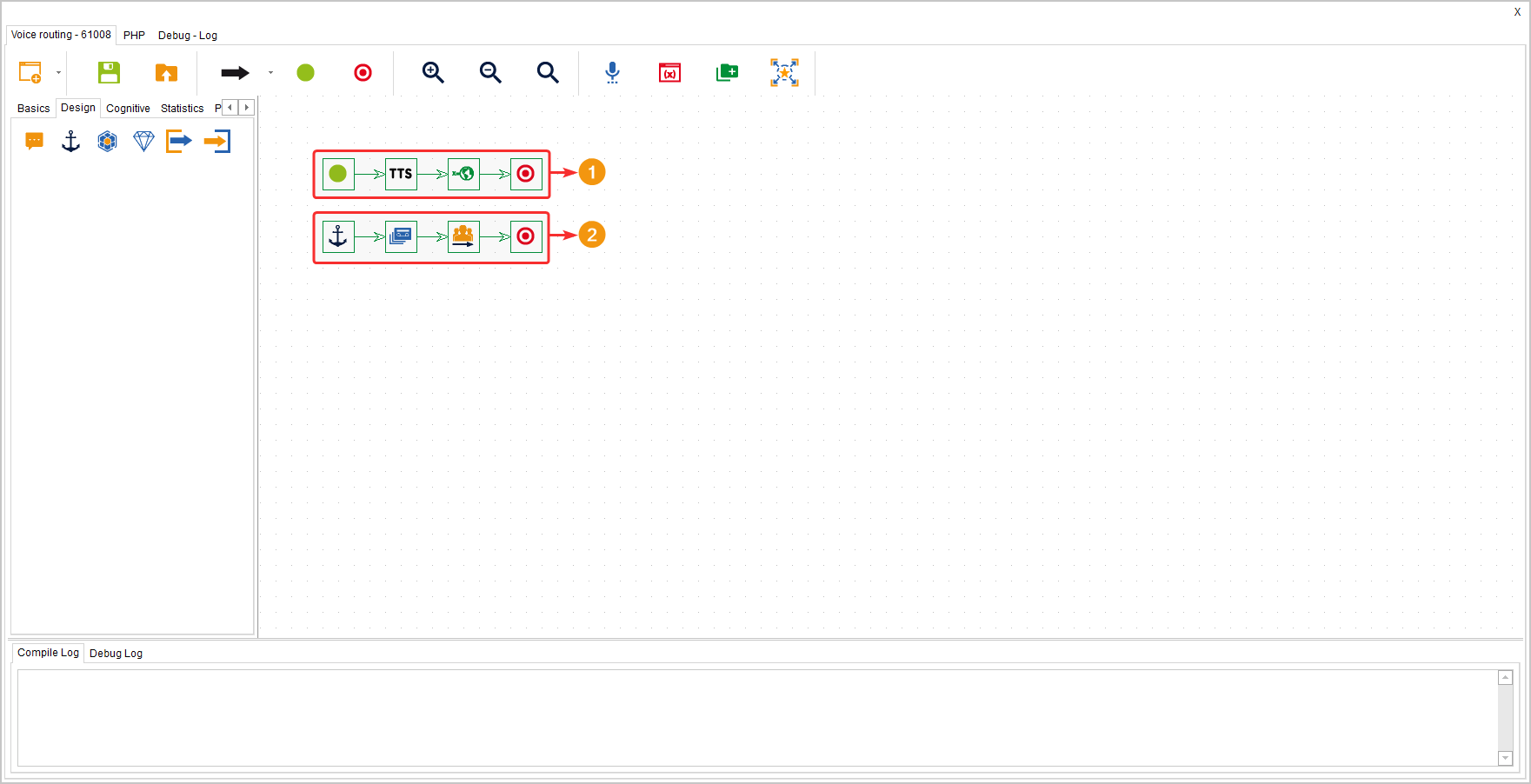This component is used to save isolated flows from the main flow of the routing point. In other words, it allows you to save parts of the flow that you may not need at the moment but could use later.
Remember that a routing point can only have one start, so there cannot be loose components in the flow. The “Anchor” component is used to create isolated routes from the main route with the objective of, for example, saving them for later use.
It is located in the “Design” components group and is available in all types of routing (Voice, Interaction, Chat, and CRM + Webhook).
Example #
Below, you can observe that the flow is divided into two segments, but the second segment is initiated using the “Anchor” component. Normally, if the flow is divided like this, it would show an error during compilation. However, thanks to the “Anchor” component, the flow compiles correctly. Keep in mind that the route that the user follows is the one containing the “Start” component (Green circle). The anchor is only used to keep that segment separate and save it for possible future use or as a reference.
- Main segment of the flow (which contains the component that starts the flow).
- Segment of the flow that has been separated using the “Anchor” component. Remember that this does not affect the functioning of the flow.




